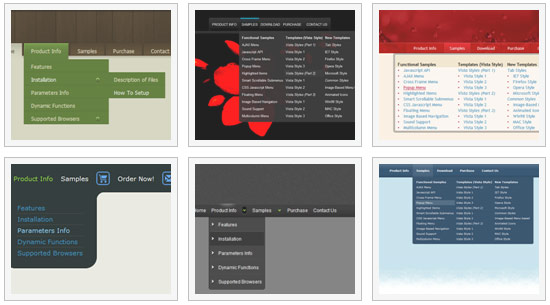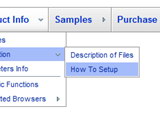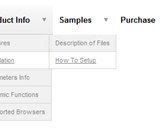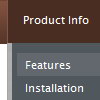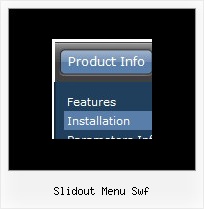Recent Questions
Q: Why do I get the "Incorrect Copyright" message in Internet Explorer 7. I am using Deluxe Menu version 1.14. Shouldn't this support IE5+, including IE7?
This is what I found in you FAQ about this matter:
http://deluxe-menu.com/rq-css-pull-down-menu-copyright-support.html
Do I really need to buy an upgrade for each new browser release when I don't need any of the new features in Deluxe Menu???
A: Thanks for your interest in our products.
Deluxe Menu v1.14 works with "Incorrect Copyright" message in IE7. Youshould upgrade to Deluxe Menu v2.0.
The upgrade is free for existing customers.
You can download licensed package from the same link in your licensemessage.
Q: How can we add a css horizontal dropdown menu separator? I’ve tried the following code but it only adds a menu item with the text “|-“ which is unselectable.
dm_ext_addItem(0, 1, ["|-"])
A: You should add separator without "|" symbol:
dm_ext_addItem(0, 1, ["-"], 1);
Q: Could you please explain how to increase the height of our javascript menu submenu links to 18 or 20 px each?
A: You can create Individual submenu style and assign it to the firstitem in each submenu.
var menuStyles = [
["menuBackColor=transparent","menuBorderWidth=1","itemSpacing=1","itemPadding=0px 5px 0px 5px"],
["itemPadding=5px 2px 5px 2px"],
];
var menuItems = [
["Advanced Taser Guns","http://www.defenseproducts101.com/tasers.html", "", "", "", "", "0", "", "", "", "", ],
["|Advanced Taser Guns","http://www.defenseproducts101.com/tasers.html", "", "", "", "", "", "1", "", "", "", ], //assign style
Q: I have looked through the FAQS on your site, but can’t find a clear answer to this questions:
Can a menu submenu dhtml be triggered to an open state upon onload?
I can get the top level menu over state to show, but the drop downs won’t open.
A: Unfortunately it is not possible to highlight the pressed menu submenu dhtml itemin Deluxe Menu now. You can highlight the top items only.








